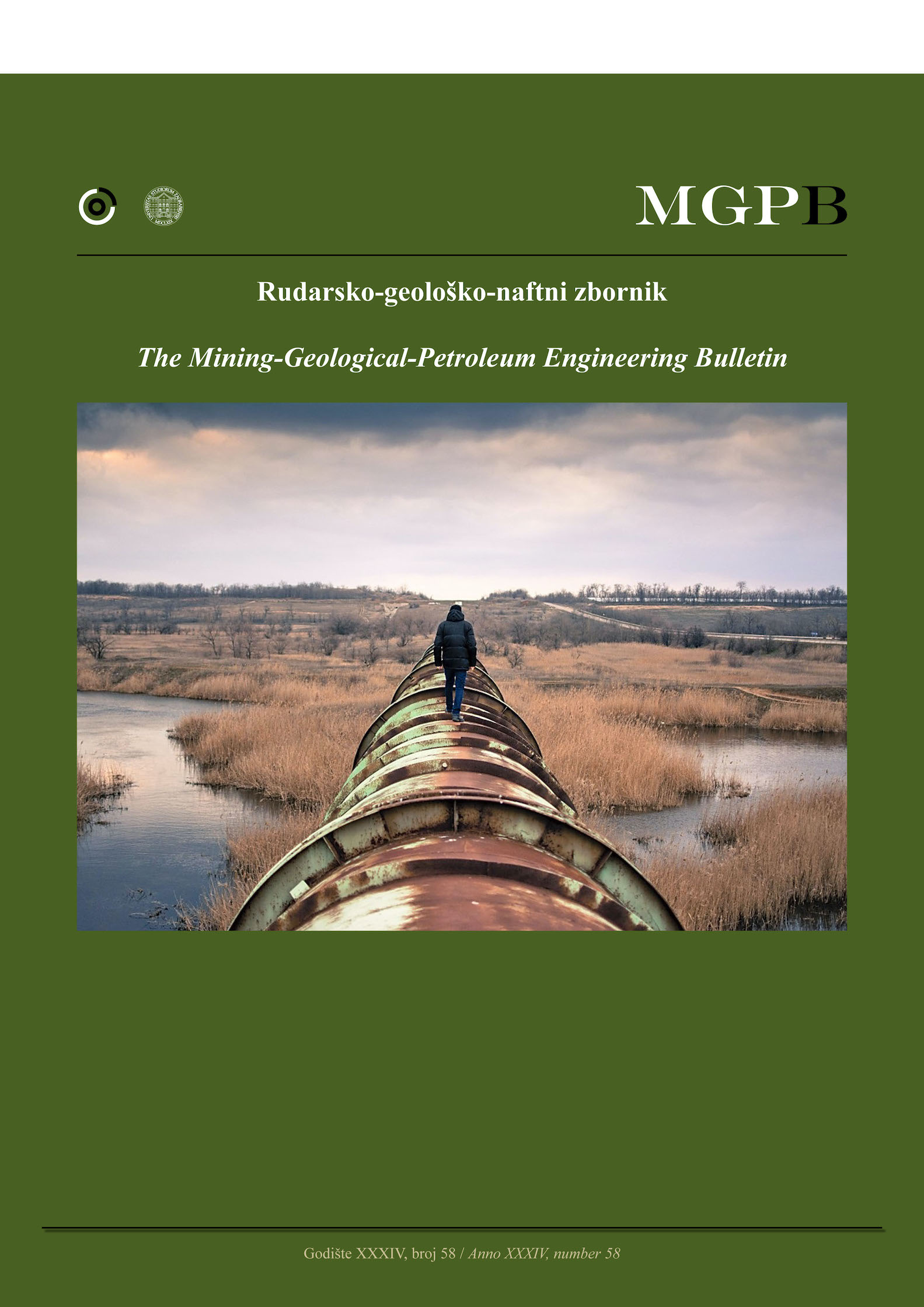Effect of grinding media on the milling efficiency of a ball mill
DOI:
https://doi.org/10.17794/rgn.2022.2.14Keywords:
Ores comminution, grinding media, ball size distribution, bond Work IndexAbstract
The size of grinding media is the primary factor that affects the overall milling efficiency of a ball mill (e.g. power consumption and particle size breakage). This article tackles the lack of a design tool that could help choose the ball loading composition in mills. Such a tool enables the maximization of the exposed surface area per unit energy (cm2/J). The effect of ball load composition, by varying the grinding media size distribution (e.g. alternatively by mixing four groups of 19.5, 38 mm; 19.5, 50 mm; 38, 50 mm and 19.5, 38, 50 mm), on the milling efficiency of a laboratory scale ball mill has been investigated in this article concerning ball number, total surface area, and ball weight. The results reveal that the amount of required energy is close in values, per each ball loading mixture, concerning three characteristic parameters. The amount of required energy varies between 3.22 kWh/st & 3.65 kWh/st. Moreover, the new surface area per unit energy (e.g. cm2/J) significantly influences milling efficiency. In contrast, the ball weight has a minor effect. This study would be helpful in industries in which comminution is part of the process, such as mining and cement industries.
Downloads
Published
How to Cite
Issue
Section
License
Copyright (c) 2022 authors and journal

This work is licensed under a Creative Commons Attribution 4.0 International License.
Creative Commons-BY
Authors who publish with this journal agree to the following terms:
In agreeing this form, you certify that:
- You read the ethical codex of the RGN zbornik available at journal web.
- You submitted work is your original work, and has not previously been published and does not include any form of plagiarism.
- You own copyright in the submitted work, and are therefore permitted to assign the licence to publish to RGN zbornik.
- Your submitted work contains no violation of any existing copyright or other third party right or any material of an obscene, libellous or otherwise unlawful nature.
- You have obtained permission for and acknowledged the source of any illustrations, diagrams or other material included in the work of which you are not the copyright owner.
- You have taken due care to ensure the accuracy of the work, and that, to the best of your knowledge, there are no false statements made within it.
- All co-authors of this submitted work are aware of, and in agreement with, the terms of this licence and that the submitted manuscript has been approved by these authors.
Publication licence
You retain copyright in your submitted work, according to journal license policy (CC-BY). By signing this form you agree that RGN zbornik may publish it under the publication licence. In summary the licence allows the following:
Anyone is free:
- To copy, distribute, display, and perform the work.
- To make derivative works.
Under the following conditions:
- The original author must always be given credit.
- The work may not be used for commercial purposes.
- If the work is altered, transformed, or built upon, the resulting work may only be distributed under a licence identical to this one.
Exceptions to the licence
In addition to publishing the work printed under the above licence, RGN zbornik will also enable the work to be visible online.
The journal editorial can change the licence rules anytime but it cannot retroactively restrict author(s) rights.


